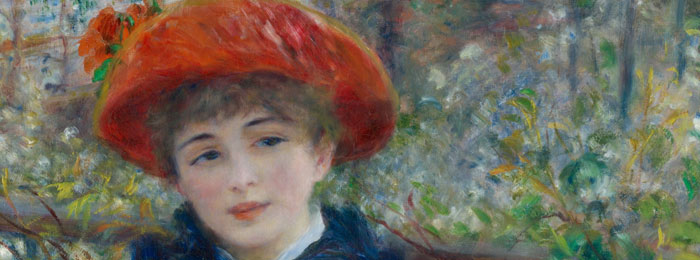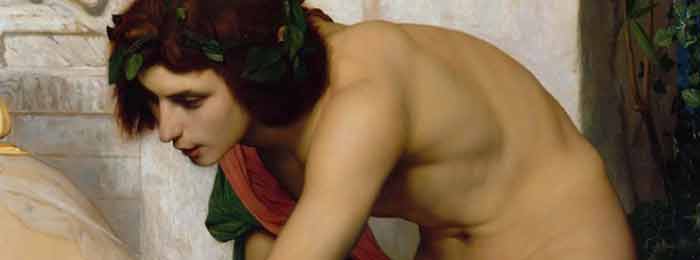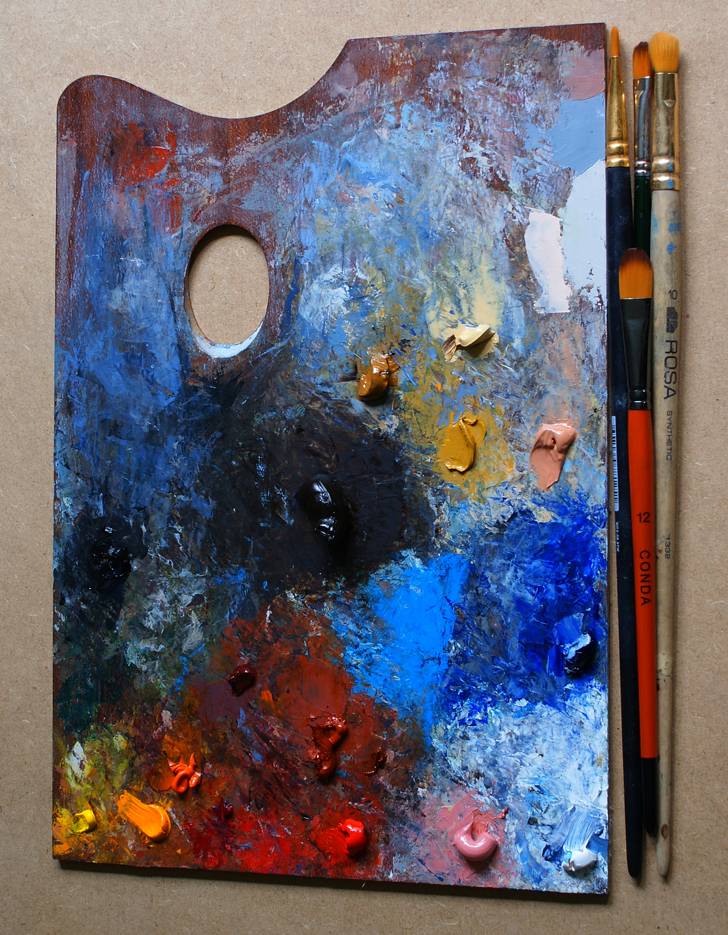On 28 Aug, 2015 With
Renoir’s Palette Pierre-Auguste Renoir was a French artist who was a leading painter in the development of the Impressionist style. As a celebrator of beauty, and especially feminine sensuality, it has been said that “Renoir is the final representative of a tradition which runs directly from Rubens to Watteau.” Renoir’s paintings are notable for their vibrant light and saturated color, most often focusing on people in intimate and candid compositions. The female nude was one of his primary subjects. In characteristic Impressionist style, Renoir suggested the details of a scene through freely brushed touches of color, so that his figures softly fuse with one another and their surroundings. One of the best known Impressionist works is Renoir’s 1876 Dance at Le…
Read More
On 28 Jun, 2015 With
Clothed female, naked male in Art Clothed female, naked (or nude) male is a genre of erotica featuring one or more nude men and one or more clothed women. In classical antiquity, the portrayal of nude male form in art (including the exposure of genitals) was considered to be more acceptable than that of the naked female form. This can be seen in the comparative portrayal of the classical theme of Perseus and Andromeda. In a wall painting of ancient Pompeii, Perseus is nude while Andromeda is fully clothed. By the renaissance, this view had reversed. For example, in Titian’s treatment of Perseus and Andromeda in mid-1550s, however, it is Andromeda who is nude – save for the barest wisp of fabric – while Perseus is clothed in armour. Depictions of…
Read More
On 28 Aug, 2012 With
Oil painting essential materials and techniques: PAINTS Of all your materials, it is on your paints that quality has the most vital effect. With bad paint your work is hopeless. You may get an effect that looks all right, but how long will it stand, and how much better may it not have been if your colors had been good? You can tell nothing about it. You may have luck, and your work hold; or you may not have luck, and in a month your picture is ruined. Don’t trust to luck. Keep that element out as much as you can, always. But in the matter of paints, if you count on luck at all, remember that the chances are…
Read More
On 12 Aug, 2011 With
Artist in his Studio This is a view of Claude Monet standing in his first studio amidst his favorite canvases. The light of the afternoon is almost palpable. This room located in his main house at Giverny was turned into his sitting-room after 1890. The picture was made in springtime according to the tulips behind Monet. The photo reveals how much the painter loved flowers. There were at least six vases in his studio on this day! When Monet became successful, he built a new house in the corner of his garden, where he moved his studio. He had now a well lit large room to work in and to store his paintings. The former studio became a place where he used…
Read More
On 29 Nov, 2010 With
Cynical realism Cynical realism is a contemporary movement in Chinese art, especially in the form of painting, that began in the 1990s. Beginning in Beijing, it has become the most popular Chinesecontemporary art movement in mainland China. It arose through the pursuit of individual expression by Chinese artists that broke away from the collective mindset that existed since theCultural Revolution. The major themes tend to focus on socio-political issues and events since Revolutionary China (1911) to the present. These include having a, usually humorous and post-ironic, take on a realist perspective and interpretation of transition that Chinese society has been through, from the advent of Communism to today’s industrialization andmodernization. Artists associated with Cynical Realism include Fang Lijun, Liu Wei, and Yue Minjun.
Read More
On 27 Nov, 2010 With
American realism was a turn of the century idea in art, music and literature that showed through these different types of work, reflections of the time period. Whether it was a cultural portrayal, or a scenic view of downtown New York City, these images and works of literature, music and painting depicted a contemporary view of what was happening; an attempt at defining what was real. In America at the beginning of the 20th century a new generation of painters, writers and journalists were coming of age. Many of the painters felt the influence of older American artists like Thomas Eakins, Mary Cassatt, John Singer Sargent, James McNeill Whistler, Winslow Homer, Childe Hassam, J. Alden Weir, Thomas Pollock Anshutz, and William Merritt Chase. However they were interested in creating…
Read More
On 19 Nov, 2010 With
Neo-conceptual art Neo-conceptual art describes art practices in the 1980s and particularly 1990s to date that derive from the conceptual art movement of the 1960s and 1970s. These subsequent initiatives have included the Moscow Conceptualists, United States neo-conceptualists such as Cindy Sherman and the Young British Artists, notably Damien Hirst and Tracey Emin in the United Kingdom, where there is also a Stuckism counter-movement and criticism from the 1970s conceptual art group Art and Language. History Many of the concerns of the “conceptual art” movement proper have been taken up by many contemporary artists since the initial wave of conceptual artists. While many of these artists may not term themselves “conceptual artists”, ideas such as anti-commodification, social and/or political critique, digital art, and ideas/information as medium continue to be aspects…
Read More
On 6 Nov, 2010 With
The Art of the Third Reich, the officially approved art produced in Nazi Germany between 1933 and 1945, was characterized by a style ofRomantic realism based on classical models. While banning modern styles as degenerate, the Nazis promoted paintings and sculptures that were narrowly traditional in manner and that exalted the “blood and soil” values of racial purity, militarism, and obedience. Other popular themes for Nazi art were the Volk at work in the fields, a return to the simple virtues of Heimat (love of homeland), the manly virtues of the National Socialist struggle, and the lauding of the female activities of child bearing and raising (Kinder, Küche, Kirche). Similarly, music was expected to be tonal and free of jazz influence; films and plays were censored. Nazi art bears a close similarity to…
Read More
On 31 Oct, 2010 With
Information art Information art (or ‘informatism’ ) is an emerging field of electronic art that synthesizes computer science, information technology, and more classical forms of art, including performance art, visual art, new media art and conceptual art. Information Art often includes interaction with computers that generate artistic content based on the processing of large amounts of data. Informatism follows on the 1970 exhibition organized by Kynaston McShine called “Information”, held at the Museum of Modern Art in New York City – a show that formally established conceptual art as a leading tendency in the United States. This tendency then spread widely throughout the world. Thisconceptual trend followed on the activities of Experiments in Art and Technology known as E.A.T. Artistic practice Information art data can be manifested using photographs, census data, micropayments, personal profiles and…
Read More
On 30 Oct, 2010 With
Neo-figurative art describes an expressionist revival in modern form of figurative art. The term neo and figurative emerged in the 1960s in Mexicoand Spain to represent a new form of figurative art. Neo-figurative artists Famous Neo-figurative artists include: Fernando Botero Grupo Hondo (Spain) Antonio Berni Veronica Ruiz de Velasco Oswaldo Viteri
Read More




